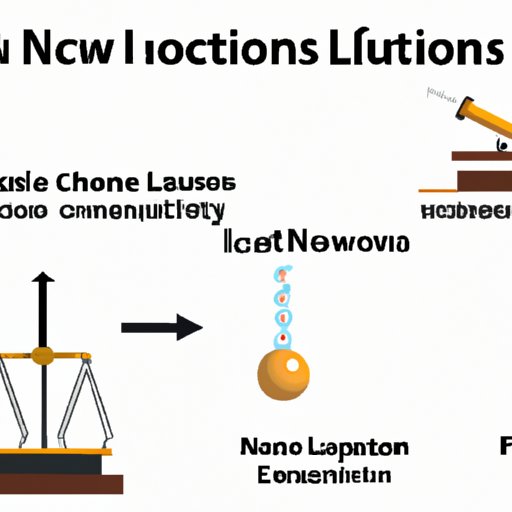Introduction
The scientific method is an organized process used to gain knowledge about the physical world. It involves careful observation, experimentation, data analysis, and forming conclusions based on evidence. An important part of this process is the development of scientific laws, which are statements that describe a certain phenomenon or behavior. Through these laws, scientists are able to accurately predict and explain events in the natural world.
Throughout history, scientific laws have been discovered and developed by various individuals, including Aristotle, Galileo, and Isaac Newton. These laws form the basis of our understanding of the physical world and the universe as a whole. They are essential for making progress in various fields, from physics and chemistry to biology and astronomy.

Difference Between Laws and Theories
It is important to distinguish between laws and theories when talking about scientific discoveries. A law describes a phenomenon or behavior, while a theory explains why it happens. For example, Newton’s Law of Gravity states that objects with mass will attract each other, while the Theory of Relativity explains why this occurs. Laws are often more general, while theories provide more detail and explanation.
Another example is the Law of Conservation of Mass, which states that matter cannot be created or destroyed. This law is supported by the Theory of Relativity, which explains how energy and matter are related. Both laws and theories are necessary for understanding the physical world, but they serve different purposes.
Implications of Certain Scientific Laws
Scientific laws have many implications for society and everyday life. Since laws are statements that describe a phenomenon or behavior, they can be used to make predictions about future events. This is especially useful in fields such as meteorology and astronomy, where predicting the weather or tracking celestial bodies is essential.
In addition, scientific laws can be used to develop new technologies. For example, Newton’s Laws of Motion are used to design airplanes and rockets. Similarly, the Laws of Thermodynamics are used to create efficient heating and cooling systems. Without scientific laws, these technological advances would not be possible.
Types of Scientific Laws
There are many different types of scientific laws, each describing a different phenomenon or behavior. The most well-known is Newton’s Laws of Motion, which describe the relationship between force, mass, and acceleration. Other laws include the Laws of Thermodynamics, which describe the transfer of heat and energy, and the Laws of Conservation, which describe how energy and matter are conserved.
The Laws of Probability are also important for understanding the physical world. These laws describe how likely it is for a certain event to occur. For example, a coin toss has a 50% chance of landing heads and a 50% chance of landing tails.

Comparison of Different Scientific Laws
Despite the variety of scientific laws, there are similarities between them. All laws describe a phenomenon or behavior, and they all rely on evidence and logic to support their claims. In addition, all laws have implications for society and everyday life. For example, Newton’s Laws of Motion can be used to design aircraft, while the Laws of Conservation can be used to create efficient heating and cooling systems.
Though there are similarities between different scientific laws, there are also differences. Some laws are more general, while others are more specific. For example, the Laws of Thermodynamics are more specific than Newton’s Laws of Motion. Additionally, some laws have more implications for society than others. For example, the Laws of Probability have implications for gambling and insurance, while the Laws of Conservation have implications for energy efficiency.
Conclusion
In conclusion, scientific laws are statements that describe a phenomenon or behavior. They are essential for understanding the physical world and making progress in various fields. There are many different types of scientific laws, including Newton’s Laws of Motion, the Laws of Thermodynamics, the Laws of Conservation, and the Laws of Probability. Though there are similarities between different laws, there are also differences. By understanding scientific laws, people can better understand the world around them.
(Note: Is this article not meeting your expectations? Do you have knowledge or insights to share? Unlock new opportunities and expand your reach by joining our authors team. Click Registration to join us and share your expertise with our readers.)
